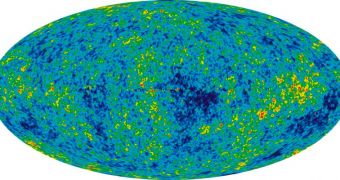During the latest investigation researchers conducted on the nature of dark energy, it was discovered that the stuff was only minimally-present in the early Universe. At this point, dark energy accounts for more than 74 percent of cosmic density.
However, a short while after the Big Bang, the stuff only accounted for as little as 1.8 percent of the density of the Universe. This discovery puzzles scientists because they always thought that dark energy was a dominant player in controlling the development of the entire Cosmos.
The new data seem to indicate that that was not the case, and that the influence of dark energy began to make itself felt as the Universe expanded. This is interesting because the stuff was believed to be the main engine driving cosmic expansion in the first place.
In order to determine whether established cosmological theories are correct, researchers set out to determine how much dark energy was present in the early Universe. This research brought them a step closer to understanding this, but in a different direction than expected.
Scientists used the South Pole Telescope, in Antarctica, to investigate the Cosmic Microwave Background (CMB), the relic radiation left behind by the Big Bang. This layer of ancient photons contains massive amounts of data on how the Universe looked like in its infancy.
In the end, measurements indicate that dark energy began humbly, by accounting for 1.8 percent of cosmic density, and then grew over billions of years, until it reached its current levels. Some experts believe that the rise will continue over the coming eons as well.
What is extremely interesting is that the new readings provide additional support for an alternative theory on the nature of dark energy. Some scientists see the stuff as the cosmological constant Albert Einstein proposed in his theory on general relativity.
It could be that the prevalence of dark energy hasn't changed at all since the early Universe. In fact, the difference in numbers we are seeing between past and present values may be accounted for by the decreased density of normal matter. The decrease occurs as the Universe expands.
“In any case, no deviation from a simple model with a cosmological constant is seen in the [SPT] data and this is impressive by itself. There can be at most a rather small fraction of early dark energy, consistent with the results of earlier investigations,” Heidelberg University expert Christof Wetterich says for Space.
A paper describing the new study has already been submitted for peer review to the Astrophysical Journal Letters, and was published online in the journal arXiv.

 14 DAY TRIAL //
14 DAY TRIAL //